Themed collection The 16th International Congress on Photobiology

Applications of phototransformable fluorescent proteins for tracking the dynamics of cellular components
Phototransformable fluorescent proteins are GFP orthologs whose emission and excitation properties are modulatable by light. These reporter proteins offer specific advantages for studying protein trafficking in a spatiotemporal manner.
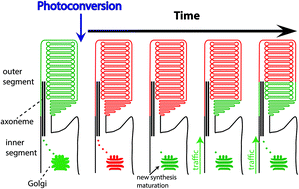
Photochem. Photobiol. Sci., 2015,14, 1787-1806
https://doi.org/10.1039/C5PP00174A
Photoactivated cyclases: In memoriam Masakatsu Watanabe
In memoriam Masakatsu Watanabe.
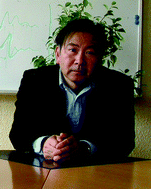
Photochem. Photobiol. Sci., 2015,14, 1781-1786
https://doi.org/10.1039/C5PP00233H
Photo-damage, photo-protection and age-related macular degeneration
The course of Age-related Macular Degeneration (AMD) is described as the effect of light (400–580 nm) on various molecular targets in photoreceptors and the retinal pigment epithelium (RPE). Photo-damage is followed by inflammation, increasing oxidative stress and, probably, unveiling new photosensitive molecules.
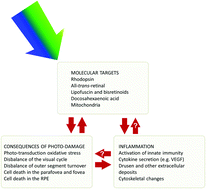
Photochem. Photobiol. Sci., 2015,14, 1560-1577
https://doi.org/10.1039/C5PP00188A
Reviewing the relevance of fluorescence in biological systems
We review the state of the art in the research on the fluorescence emitted by plant leaves, fruits, flowers, avians, butterflies, beetles, dragonflies, millipedes, cockroaches, bees, spiders, scorpions and sea organisms and discuss its relevance in nature.
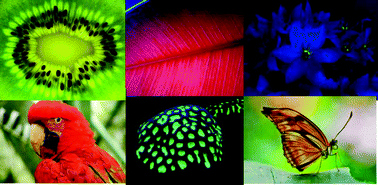
Photochem. Photobiol. Sci., 2015,14, 1538-1559
https://doi.org/10.1039/C5PP00122F
First detection of the presence of naturally occurring grapevine downy mildew in the field by a fluorescence-based method
The presence of a major grapevine disease was detected in the field by a new fluorescence proximal sensor. The approach based on UV-induced fluorescence of phytoalexins can be extended to vineyard mapping.
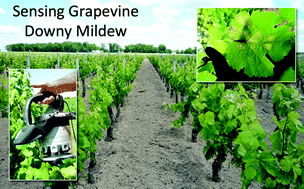
Photochem. Photobiol. Sci., 2015,14, 1807-1813
https://doi.org/10.1039/C5PP00121H
Fluorescence quenching in β-cyclodextrin vesicles: membrane confinement and host–guest interactions
Host–guest interactions of nitro compounds at different pH values determine the fluorescence quenching of a spirobifluorene dye confined in the membrane of β-cyclodextrin vesicles.
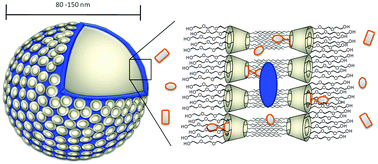
Photochem. Photobiol. Sci., 2016,15, 235-243
https://doi.org/10.1039/C5PP00226E
Rotifer dynamics in three shallow lakes from the Salado river watershed (Argentina): the potential modulating role of incident solar radiation
A schematic representation of the seasonal cycle of rotifer in L. Chascomús. In this figure the relative abundances of the three dominant rotifer species are expressed as fractions of the estimated clear-sky mean daily incident solar radiation.
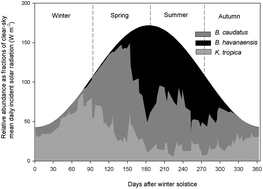
Photochem. Photobiol. Sci., 2015,14, 2007-2013
https://doi.org/10.1039/C5PP00125K
A2E and lipofuscin distributions in macaque retinal pigment epithelium are similar to human
The marked similarity between the distributions of lipofuscin fluorescence/A2E in cynomologous and human RPE tissues indicates that the lipofuscin/A2E mismatch is an inherent property of the unique anatomy of primate eyes.
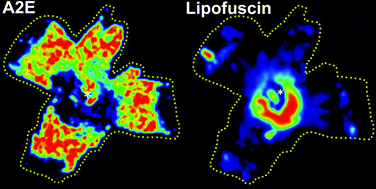
Photochem. Photobiol. Sci., 2015,14, 1888-1895
https://doi.org/10.1039/C5PP00170F
Light, lipids and photoreceptor survival: live or let die?
DHA, released from membrane phospholipids upon oxidative damage, activates retinoid X receptors (RXR), thus triggering multiple mechanisms, including upregulation or activation of pro-survival proteins, antioxidant defense mechanisms and the ERK/MAPK pathway to promote photoreceptor survival.
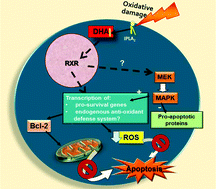
Photochem. Photobiol. Sci., 2015,14, 1737-1753
https://doi.org/10.1039/C5PP00194C
Current concept of photocarcinogenesis
Schematic pathway of UV induced inflammation and the formation of oxidative stress.
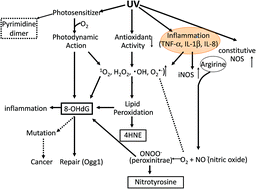
Photochem. Photobiol. Sci., 2015,14, 1713-1721
https://doi.org/10.1039/C5PP00185D
Aminolevulinic acid dendrimers in photodynamic treatment of cancer and atheromatous disease
ALA dendrimers are taken up by caveolae-mediated endocytosis in macrophages. Intracellular ALA release gives rise to PpIX synthesis and subsequent photosensitization of key cells in atheromas and tumour diseases.
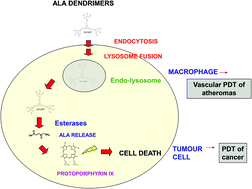
Photochem. Photobiol. Sci., 2015,14, 1617-1627
https://doi.org/10.1039/C5PP00126A
About this collection
The 2014 International Congress of Photobiology was held in the “Pavillion Argentina” located within the University Campus of the National University of Córdoba, Argentina. This conference was the 16th in a series sponsored by the International Union of Photobiology (IUPB, www.iuphotobiology.com). This was the first time that the IUPB Congress was held in the Southern Hemisphere and also the first time held South of the Rio Grande. The University of Córdoba is the oldest in Argentina (founded in 1613) and the City of Córdoba offered a wonderful frame (and great weather) for the Congress.
All aspects of the interaction of light with the biosphere were covered, such as photosynthesis, photomorphogenesis, photomovement of plants and bacteria, the interaction of UV light with ecosystems (including bacteria, phytoplankton, zooplankton, algae, plants, mammalian cells, and humans), circadian rhythms in plants and animals, vision and light-induced damage to the retina, UV induction of skin cancer, as well as the use of light for the treatment of various illnesses and the photochemistry of xenobiotics and biological molecules. The use of light-based technologies for the study of biological processes was also the subject of various symposia